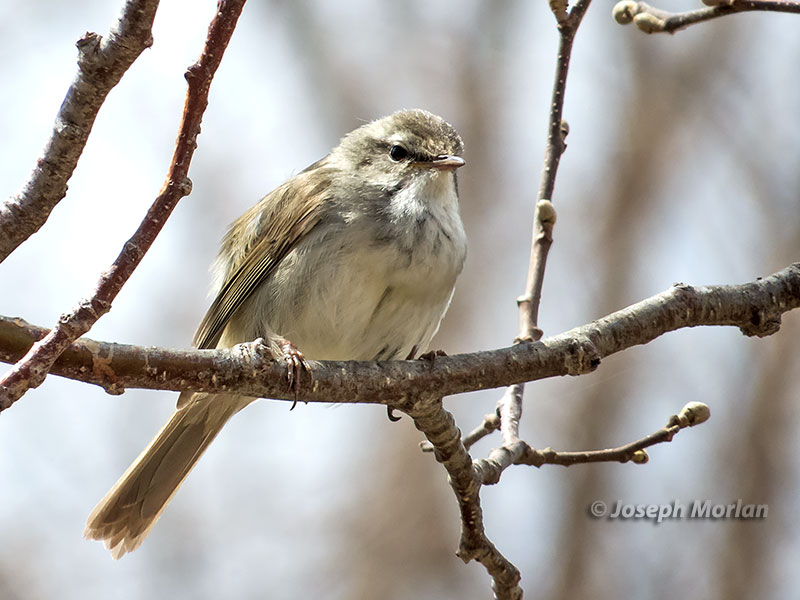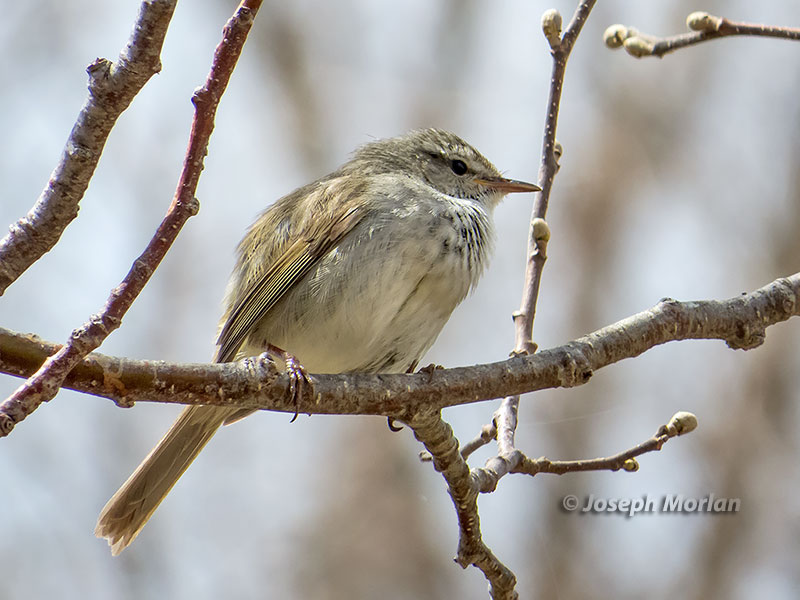


Like most Bush-Warblers, this species can be secretive and hard to see, but its loud whistled song often gives away its presence. Four or five subspecies are recognized. This is H. d. cantans from the main Japanese Islands characterized by a dull grayish wash with faint streaks across its breast as seen here. The form introduced to Hawaii is uncertain; it is likely either cantans (Clements/eBird) or nominate diphone (H&M4).
Formerly considered a Silviid Warbler (Silviidae) in the genus Cettia, it now get not only a new genus, Horornis but a new family. It is moved to Cettiidae by Clements/eBird and IOC or Scotocercidae by H&M4 and HBW. The dispute centers on whether Cettiidae was proposed with a valid description. Evidently it was not, so the editors of H&M4 acted as first revisers selecting Scotocercidae as having precedence. This species has been traditionally lumped with Philippine Bush-warbler (H. seebohmi), Manchurian Bush-Warbler (H. borealis), and/or Korean Bush-warbler (H. canturians) but now usually split as a separate species. Canon PowerShot SX50 HS.
References:
Alström P, S Hohna, M Gelang, PGP Ericson & U. Olsson. (2011). Non-monophyly and intricate morphological evolution within the avian family Cettiidae revealed by multilocus analysis of a taxonomically densely sampled dataset BMC Evol. Biol. 11:352.
Brazil, M. (2009). Birds of East Asia. Princeton Univ. Press.
Clement, P. (2017). Japanese Bush-warbler (Horornis diphone). In: del Hoyo, J., Elliott, A., Sargatal, J., Christie, D.A. & de Juana, E. (eds.). Handbook of the Birds of the World Alive. Lynx Edicions, Barcelona. (retrieved from http://www.hbw.com/node/58736 on 25 June 2017).
Dickinson, EC & L Christidis (Eds). 2014. The Howard & Moore Complete Checklist of the Birds of the World. 4th Edition. Vol. 2 Passerines, Aves Press, Eastbourne, U.K.
Kennerley, P.R. & Pearson, D. (2010) Reed and Bush Warblers. Christopher Helm, London.